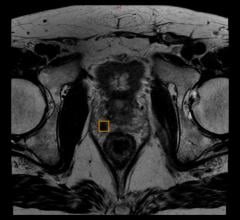August 7, 2013 — A more precise method for determining bone marrow involvement in patients with diffuse large B-cell lymphoma (DLBCL) — a key factor in tailoring patient management plans — has been identified by researchers in a study published in the August issue of The Journal of Nuclear Medicine. Imaging with 18F-FDG positron emission tomography/computed tomography (PET/CT), when compared to bone marrow biopsy, was more sensitive, showed a higher negative predictive value and was more accurate, changing treatment for 42 percent of patients with bone marrow involvement.
DLBCL is the most frequent subtype of high-grade non-Hodgkin lymphoma, accounting for nearly 30 percent of all newly diagnosed cases in the United States. In recent decades, there has been a 150 percent increase in incidence of DLBCL.
“In our study, we showed that in diffuse large B-cell lymphoma, 18F-FDG PET/CT has better diagnostic performance than bone marrow biopsy to detect bone marrow involvement and provides a better prognostic stratification. While bone marrow biopsy is considered the gold standard to evaluate bone marrow involvement by high-grade lymphomas, 18F-FDG PET/CT is in fact the best method to evaluate extension of the disease, as well as avoid invasive procedures,” said Louis Berthet, M.D., lead author of the study, “In Newly Diagnosed Diffuse Large B-Cell Lymphoma, Determination of Bone Marrow Involvement with 18F-FDG PET/CT Provides Better Diagnostic Performance and Prognostic Stratification Than Dose Biopsy.”
The retrospective study included 133 patients diagnosed with DLBCL. All patients received both a whole-body 18F-FDG PET/CT scan, as well as a bone marrow biopsy to determine bone marrow involvement. A final diagnosis of bone marrow involvement was made if the biopsy was positive, or if the positive PET/CT scan was confirmed by a guided biopsy, by targeted magnetic resonance imaging (MRI) or, after chemotherapy, by the concomitant disappearance of focal bone marrow uptake and uptake in other lymphoma lesions on 18F-FDG PET/CT reassessment. Progression-free survival and overall survival were then analyzed.
Thirty-three patients were considered to have bone marrow involvement. Of these, eight were positive according to the biopsy and 32 were positive according to the PET/CT scan. 18FDG PET/CT was more sensitive (94 percent vs. 24 percent), showed a higher negative predictive value (98 percent vs. 80 percent) and was more accurate (98 percent vs. 81 percent) than bone marrow biopsy. Among the 26 patients with positive 18F-FDG PET/CT results and negative biopsy results, 11 were upstaged to stage IV by PET/CT, which changed their treatment plans. 18F-FDG PET/CT was also determined to be an independent predictor of progression-free survival.
“Our findings add to the literature to prove the significance of 18F-FDG PET/CT in cancer evaluation and to democratize this imaging method,” said Berthet.
“Molecular imaging is the best method to adapt targeted therapies to each patient. The emergence of PET/MRI and novel radiotracers predicts an exciting new future for our field.”
Authors of the article, “In Newly Diagnosed Diffuse Large B-Cell Lymphoma, Determination of Bone Marrow Involvement with 18F-FDG PET/CT Provides Better Diagnostic Performance and Prognostic Stratification Than Dose Biopsy,” include Louis Berthet, Salim Kanoun, Alina Berriolo-Riedinger, Michael Toubeau and Inna Dygai-Cochet, Department of Nuclear Medicine, Centre Georges-François Leclerc, Dijon, France; Alexandre Cochet, Olivier Humbert and François Brunotte, Department of Nuclear Medicine, Centre Georges-François Leclerc, Dijon, France, and Le21 UMR CNRS 5158, Dijon, France; and Caroline Legouge and Olivier Casasnovas, Department of Clinical Hematology, Centre Hospitalier Régional Universitaire, Hôspital Le Bocage, Dijon, France.
For more information: jnm.snmjournals.org


 April 10, 2024
April 10, 2024 





![(A) PET images of [68Ga]Ga-DOTA-ZCAM241 uptake at baseline and 3, 7, and 12 days after injection as inflammatory arthritis developed in single representative individual mouse. Images are normalized to SUV of 0.5 for direct comparison between time points. (B) CD69 immunofluorescence Sytox (Thermo Fisher Scientific) staining of joints of representative animals during matching time points.](/sites/default/files/styles/feed_medium/public/PET%20Tracers.jpeg?itok=P5Di6MIe)


